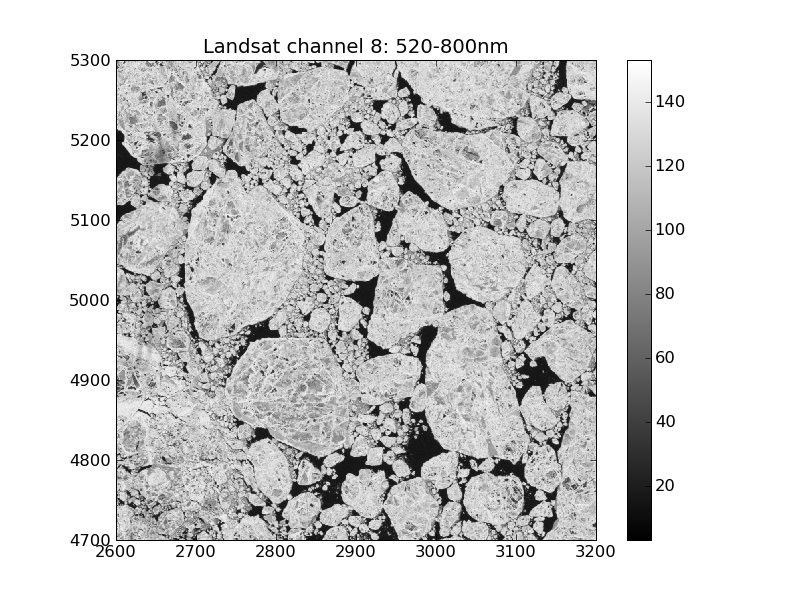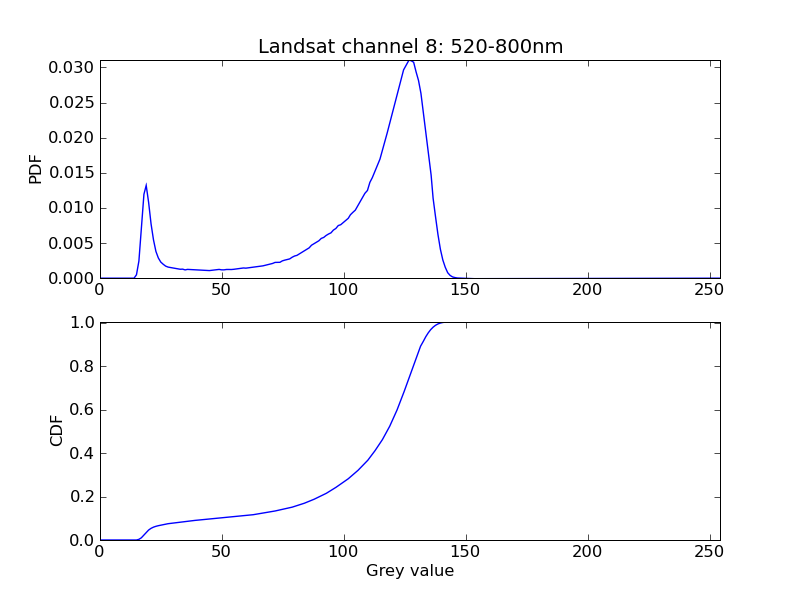|
Size: 769
Comment:
|
Size: 985
Comment:
|
| Deletions are marked like this. | Additions are marked like this. |
| Line 20: | Line 20: |
| The following code calculates the PDF {{{pdf}}} for a byte image in the intervall {{{[0,255]}}} | The following code calculates the PDF {{{pdf}}} for a ''byte'' image {{{img}}} in the intervall {{{[0,255]}}} |
| Line 29: | Line 29: |
| $\sum_{q=0}^{255}f_q=1$ | $\sum_{q=0}^{255}pdf_q=1$ |
| Line 31: | Line 31: |
The anti-derivative of the PDF is the cumulative density function (CDF). It can be approximated from the cumulative sum {{{#!python cdf=pdf.cumsum() }}} {{attachment:landsat_b80_pdfcdf.png}} |
Image statistics
The image is characterised by a probability density function (PDF). The PDF f describes the probability of the occurrence of a discrete grey level q in the range of grey levels Q.
latex error! exitcode was 2 (signal 0), transscript follows:
Example

The following code calculates the PDF pdf for a byte image img in the intervall [0,255]
The expression normed=True is used for the normalization of the PDF.
latex error! exitcode was 2 (signal 0), transscript follows:
The anti-derivative of the PDF is the cumulative density function (CDF). It can be approximated from the cumulative sum
1 cdf=pdf.cumsum()

